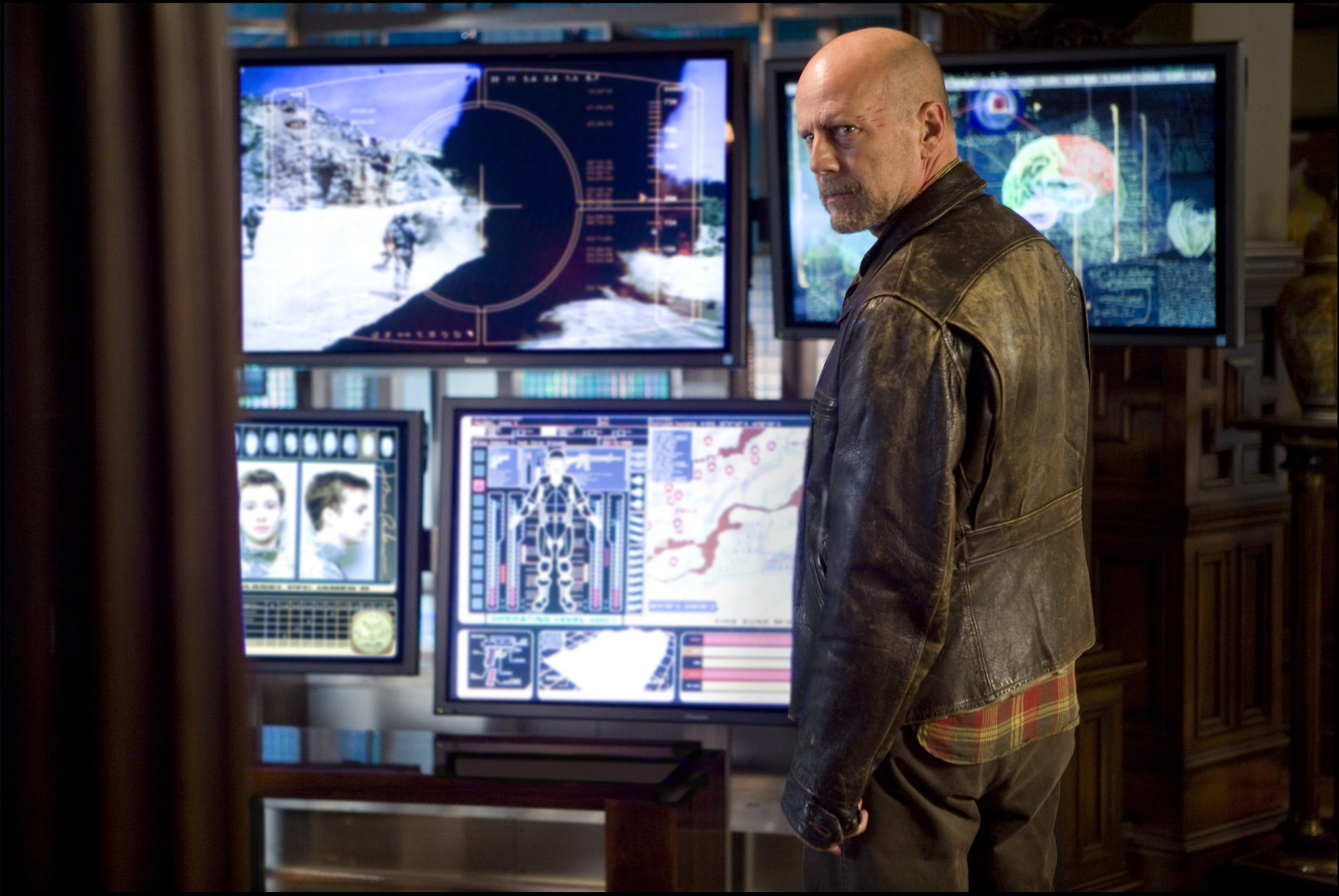 There's certainly some similarities to Kiln People, but the differences are more telling: that you can only have one surrogate, and it offers no intelligence of its own, it's just a remote control.
There's certainly some similarities to Kiln People, but the differences are more telling: that you can only have one surrogate, and it offers no intelligence of its own, it's just a remote control.But the surrogates serve as a perfect example of the kind of bad system design that comes from using backwards compatability as a means of advancement. No, really, bear with me. In the world of the movie, essentially everyone is always only interacting with the world through surrogates: complex, expensive, mechanical creations that go to a lot of effort to emulate an obsolete factor, the human presence. Take a step back and consider how you'd design that world, and you'll quickly realize that clunky, error-prone robots which only serve to fool other robots are an unnecessary complication. The whole world could be done far more flexibly, far more reliably, and far less expensively, as a virtual world. After all, the only bit you really need for that is the stuff that lets you experience the robot's sensations and control it; just hook that to software only, not to hardware, and you're already there. The robots add nothing apart from a complex, expensive, unreliable component.
And yet, the future of Surrogates is far more likely than one in which a virtual world, a cyberspace, is really a replacement for real-world interaction. Why is that? The simple reason that we can get from today's world to the world of Surrogates by a series of steps each of which can be done by individual people, companies, groups, etc. That's because each step is completely backwards-compatible with the world before it. That's why a million robots spend most of their time pretending to be people in front of other robots: they're all acting out long-obsolete backwards compatability.
But a move to cyberspace requires a single standard to emerge from the competing ones and gather enough momentum to gather the entire world, and to keep doing so despite challenges from new competitors. And everyone has to decide, when they get involved in one, which one to invest their time, money, and effort in.
The world of technology is constantly dogged by this kind of inefficiency that would disappear if we could agree on standards. In fact, this is one of the many flaws in the idea that the free market solves all problems, one that wasn't as clear in the time of Mills or even Keyes as it is now, when compatability is a much more important part of the things we do than it has ever been.

 RealTime and RTC
RealTime and RTC Prism
Prism Uncreated
Uncreated Bloodweavers
Bloodweavers Foulspawner's Legacy
Foulspawner's Legacy Lusternia
Lusternia
5 comments:
"And yet, the future of Surrogates is far more likely than one in which a virtual world, a cyberspace, is really a replacement for real-world interaction. "
I disagree. Don't take offense to this idea, but all the online MMORPGS, Second Life's, Facebooks, Sims, et al., tend to lead me to believe that a virtual, other life, is the direction that we are leaning toward. Besides, a virtual world is much more cost effective than creating 6 billion human robot replicas.
"The world of technology is constantly dogged by...inefficiency that would disappear if we could agree on standards. In fact, this is one of the many flaws in the idea that the free market solves all problems"
Ahh, the evolution of technology. Survival of the fittest...transistors? Competition may just breed contempt instead of a healthy economy.
"But a move to cyberspace requires a single standard to emerge from the competing ones and gather enough momentum to gather the entire world"
As with moving about in the real world, from state to state and country to country, we have to switch gears and recalibrate our conceptions of where we are - different rules of conduct, laws, sociabilities - having alternate cyberspaces would only require a compatability interface to pass from one to another. For example, the conversion software that allows MS software to work on Macs.
The point is that no single one of those can replace "real life" because everyone would have to agree on a single one to use for it to become ubiquitous.
Whereas if you could get a surrogate today, you could already do everything you want to do with it. It's already compatible with the entire world. No one else has to agree to a particular technology, a particular standard, for yours to be useful to interact with them.
You could even have multiple companies competing to make entirely different surrogates without them needing to be "compatible" with one another in any way.
So the transition from now to then is something we can do in small steps, each of which requires no agreement between different groups or people. Moving to a virtual world requires far more agreement than we're likely to ever get.
Good point. But you're now not taking into account the political and social backlash of using these mechanisms as surrogates. The groups of people would then have to agree on the laws, rules and regulations surrounding their use and proliferation in society. Then you would have different robots with different abilities. Just like cars you'd have the economy, basic, mid-range and luxury models to choose from. This would then further be controlled by supply/demand and competition.
What if you wanted one with wheels? A surrogate segway of sorts? Two heads. Built in binoculars or a weapon?
Just as with segregation, what if real humans decided they didn't want to interact with surrogates? You would then conceivably have no-surrogate zones, in which case you would have strict limitations on interaction regardless of compatibility.
Post a Comment